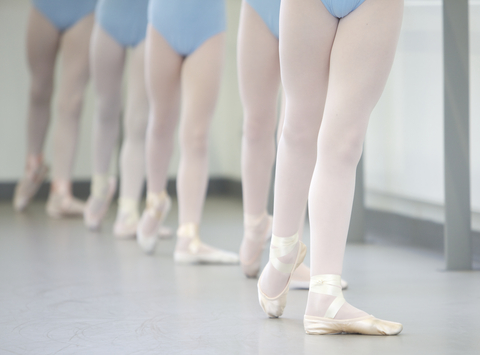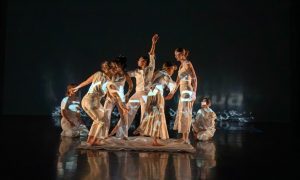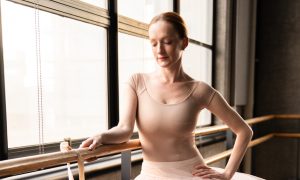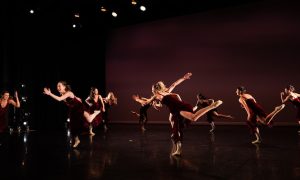Make your first year a success with advice from university dance professors.
By Emily Yewell Volin
August is back to school time and, for many dancers, that means starting your first year of college dance study. Dance Informa spoke with three university professors for advice on preparing for this transition.
How is becoming orientated into a college dance program different from the first days experienced by first year college students in other disciplines?
Michael Williams, Professor, School of Dance, The University of Arizona
Although every college dance program is different, typically the first days of a fall semester are welcomed by auditions. As a first year dancer, these auditions can be quite intimidating. Advice? Know it is part of the journey. Do your best, realizing the upper classmen might have a bit of an advantage simply due to the fact they have experienced this “drill” before. Befriend some upper classmen early to get a better sense of what will happen. Keep your spirit (and face) alive, interested, confident and able to show you’re enjoying the process. That will read. And remember, next year, you are the one with the advantage.
Tara Shepard Myers, Teaching Specialist, Emory University
There is a smaller community that often welcomes you in more readily than others…There is no easy transition – you are normally auditioning within the first week of school.
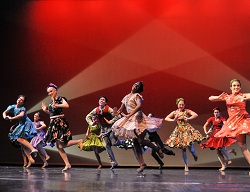
The University of Arizona Dance Ensemble. Choreography by Michael Williams. Photo by Ed Flores
Wanda K. W. Ebright, Chair of Department of Visual, Performing, & Communication Arts, Johnson C. Smith University (JCSU)
Orientation to a college dance program involves not only finding out where your classes are and meeting new classmates and instructors, but also usually a disconnect between what was emphasized in private studios or high school dance programs and what is now expected at the college level. Multiple turns and high extensions might be a main focus before college, but students can expect a college to slow them down a bit to fix alignment issues, correct posture, weight distribution, and places holding unnecessary tension in the body. A focus on using the correct muscle groups to accomplish the movements will often cause dancers previously used to long hours in their private studios to be exhausted in far fewer hours of study, until strength and stamina are increased accordingly. There may or may not be a big difference in the amount of discipline required of the student in college. There is no parent or teacher to wake them up for early classes, remind them of syllabus requirements or nag about rehearsal times in the evenings, etc. They are expected to be responsible for themselves, including stretching, conditioning, rest and nutrition.
What advice would you give a first year dance major about balancing the demands of his/her time? Students are navigating core academic classes, dance technique and theory classes, rehearsals, and often, a new level of independence.
Michael Williams
Dancers are disciplined, they must be. Entering college, that discipline will come in handy. I find with many freshmen, established discipline habits will be tested in entirely new ways. Your focused success will need to be spread across all aspects of the requirements of your major and college interests. I’d advise work hard, eat well, get rest and be healthy. I’d advise not to procrastinate, not take on more than is manageable and party sensibly (less is more in this case). Make yourself a schedule that guarantees successful outcomes. Stick to it!
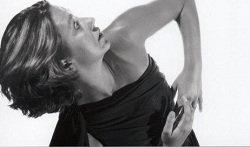
Emory University dance instructor Tara Shepard Myers
Tara Shepard Myers
Know that you can’t say yes to everything. Start with what is essential and then add on incrementally. Weigh your options and try to make a decision that is best for you. Use your calendar!!
Wanda K. W. Ebright
I recommend that each student have a planner or create a chart, writing in class times, homework hours, rehearsal hours, all meal times, snack times, and even nap times. When students start by doing this, they can look and see how much actual free time they have. When they fail to map out any of these things, students are constantly complaining that they can’t get homework done, don’t have time to eat, and don’t get enough rest. This is because they’re winging it every day, talking to friends and just hanging out. If they plan ahead of time when to do work, feed their bodies regularly, and get adequate physical rest (sleep), they usually still have plenty of free time, but they’re on the Dean’s List.
What can a first year student do during the summer to physically, academically and emotionally prepare him/herself for college level dance study?
Michael Williams
Continue to train daily. Read. Listen to a variety of music. You will want to approach your college experience with an open mind, so start opening it! Work to keep it open. A wise colleague tells our students each year, “Experience everything, judge nothing”. Of course we judge stuff. The point is, if you judge things too quickly, you dismiss them and whatever their value might have been.
Put your best foot forward each day. There’ll be days you’ll stumble. But if you do that, in the end, you will be your best. And that’s all we can hope for – to be our very best.
Tara Shepard Myers
First prepare by learning your body, know your injuries and strengths and weaknesses. Try to use the summer to go out of your comfort zone. Take a class somewhere other than your studio, see a show in a different genre of dance than you are used to and open yourself up to new and different experiences. That is what college is all about.
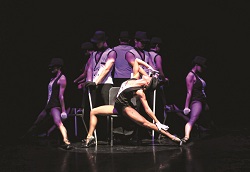
The University of Arizona Dance Ensemble. Choreography by Michael Williams. Photo by Ed Flores
Wanda K. W. Ebright
I would advise such a student to research the location of the college he or she is attending, to see what dance companies, studios, or college dance departments are nearby. I’d recommend that they spend a good bit of time on YouTube.com, searching under big, general terms like “ballet”, “contemporary dance”, “modern dance”, or “jazz”. Just seeing what types of companies come up and the wide range of companies or schools doing each style of dance will start to open them up to multiple definitions of what dance is.
I’d tell them to remember that people don’t come to college to be told they’re perfect as they are and that they shouldn’t change anything. A college dance program should certainly acknowledge your worth, then move on to identifying areas for growth or remediation, and radically improving the quality of your dancing. Expect to change how you have done things in the past. Otherwise, why go to college at all? You are supposed to grow and change over four years, or your money is wasted.
Make a list of long-term and short-term goals that you want to accomplish as a dancer. Make a list of single things to work on any single day, in any single class. Then when you attend college, have a goal for each class day – maybe working on balance today, turns tomorrow, and jumps the day after that.
How does the progression of your program support the artistic and scholarly growth of your students?
Michael Williams
At the University of Arizona School of Dance we support the artistic and scholarly growth of our students in multiple ways. First semester freshmen take dance history. We teach it in a team approach, assuring dancers have an essential historical context as they participate in dance technique and repertoire. We are a triple disciplined program, focusing on ballet, jazz and modern dance techniques. We have found that with this approach, dancers understand and can embody each dance genre individually as well as realize the ultimate fusion of these genres in contemporary choreography. Of course, we offer courses in kinesiology and choreography, but also have a few unusual offerings such as dance injury prevention and a business course for dance majors.
Tara Shepard Myers
Through leadership opportunities within student dance groups we offer the opportunity to write and choreograph thesis projects which are a true artistic and scholarly marriage. There is a running discussion in technique courses about the artistic endeavors of the faculty and students and how it applies to theory or anthropology etc.
Wanda K. W. Ebright
At JCSU we focus on proper sequencing of courses from level to level, with a strong emphasis in the first year on proper alignment and conditioning. We have a year-long emphasis in the sophomore year on both career preparation (job searching, audition and interview skills, resume and cover letter writing, etc.) and also on creative process (moving from an idea for a work of art, through research and studio experimentation, through rehearsal process, to production and post-production analysis). We provide ample opportunities for performance at various levels, in as many genres as possible, and press students to think in an entrepreneurial manner about how to create dance jobs when there appear to be none available.
All the best for your first year of college dance!
Michael Williams, Professor, School of Dance, The University of Arizona
Michael Williams has had a rich and varied career in the arts. His performance career included being a principal dancer in Gus Giordano Jazz Dance Chicago and dancing in theatrical productions with such stars as Chita Rivera and Ann Reinking. Additionally, Michael has choreographed for professional musical theater, the Chicago Apparel Center and several national dance companies. His choreography has been featured at many Jazz Dance World Congress international events and at the International Theater School Festival in Amsterdam, Holland. He has done teaching residencies for the Taiwan National Dance Festival in Taipei, Taiwan and for Jazz Dance World Congress events in San Jose, Costa Rica and Nagoya, Japan. Michael received the 2005 Jazz Dance World Congress Award for his contributions to jazz dance. He is director of the Arizona Jazz Dance Showcase and currently enjoys his role as Professor at The University of Arizona’s School of Dance. http://dance.arizona.edu
Tara Shepard Myers, Teaching Specialist, Emory University
Tara Shepard Myers earned a Bachelor of Arts degree from the University of Alabama and a Master of Fine Arts degree from Florida State University. While an MFA candidate Myers served as assistant to the director of FSU’s Dance Repertory Theatre and performed as a soloist under seminal faculty member Lynda Davis. Myers’ extensive performance career has taken her to Lyon, France as well as Poland where she danced and choreographed for Danz Studie Tanka. Domestic performance credits include works by Shapiro and Smith, Doris Humphrey, and a five year tenure with Sankofa Dance Theater. Most recently, Myers has served as artist in residence at Agnes Scott College, Coker College, and Spelman University, while serving as a teaching specialist with Emory University for the past 10 years. Most recently, Myers has performed with Staibdance, Duende Dance Theater and Indiemove.
http://dance.emory.edu
Wanda K. W. Ebright, Chair of Department of Visual, Performing, & Communication Arts, Johnson C. Smith University (JCSU)
Wanda K. W. Ebright holds an MFA in Dance Performance & Choreography from Florida State University, and is a candidate for the PhD in Dance at Texas Woman’s University, with a research focus on dance traditions in Historically Black Colleges and Universities (HBCUs). A former President of the South Carolina Dance Association, she has worked on the Quality Core Curriculum revision team for the Georgia State Department of Education, and on K-5 dance skills assessment for the South Carolina State Department of Education. She is Artistic Director and Executive Director of The Wanda Project, a contemporary dance company serving as JCSU’s dance company-in-residence, and also directs JCSU students in the Smith Repertory Dance Company. She is an active guest teacher and choreographer in Southeastern US. www.jcsu.edu/academics/visual_and_performing_arts www.thewandaproject.net
Top image: © Andrew Ross | Dreamstime.com


